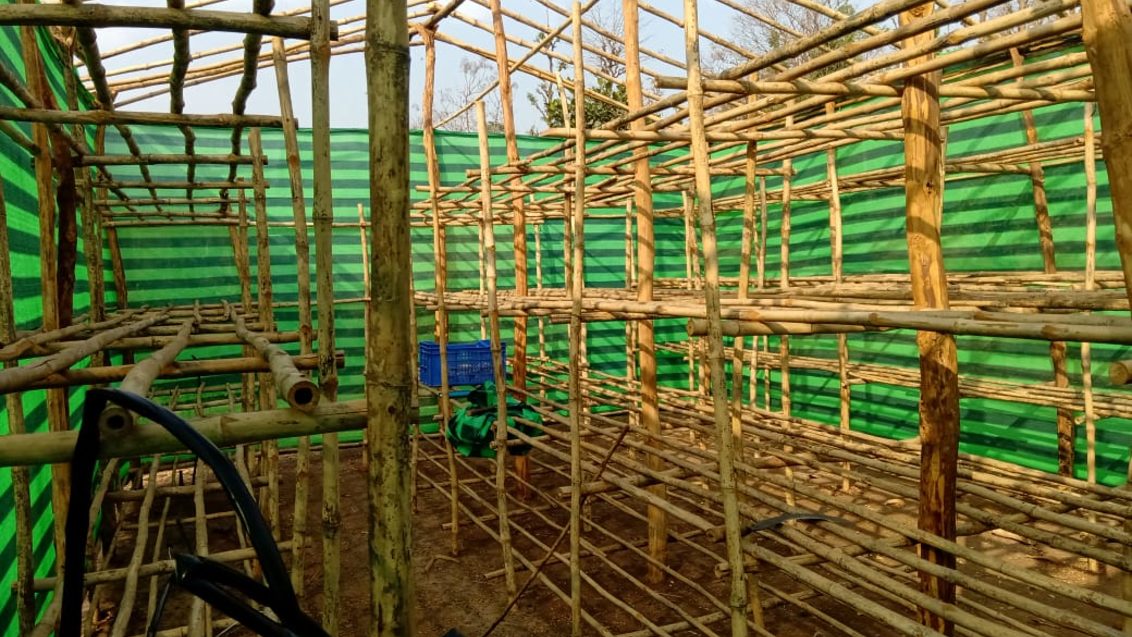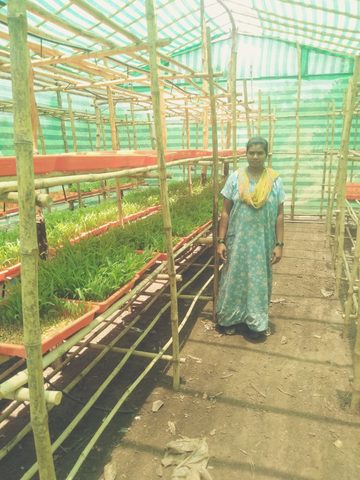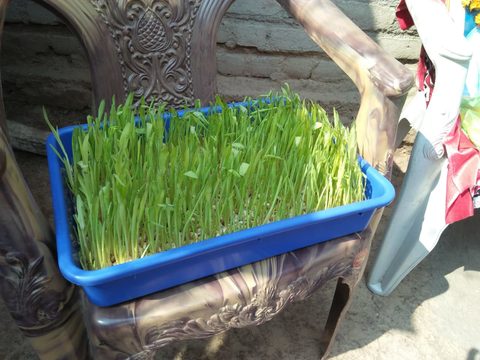Innovation: Entrepreneur spots a fodder opportunity

The Palghar region of Maharashtra faces a range of water challenges. Hydroponics* are making a big difference. Agri-entrepreneur Sunita Doke plays an important role.
In rural India, agriculture was rarely viewed as the sole source of income. Some of the Project locations where the Syngenta Foundation India works out has nutrient-deficient land. Farmers there primarily used to grow marginal crops like millets. Many were forced to migrate to cities and work as unskilled labor. The widespread perception was that agriculture-based professions are precarious and unrewarding.
In Palghar, the situation was particularly dire: agriculture only took place from June to September. For the rest of the year, heavy rainfall and uneven terrain made it impossible. However, Syngenta Foundation India (SFI) has helped to change this with the introduction of hydroponics.
SFI focused strongly on training and employing women, for example, goat-farming. Sunita Doke was selected as one of the agri-entrepreneurs. She had previously worked in a self-help group and supplied a village with agricultural and animal services.
Following comprehensive training – ten days of theory and 15 in the field – Doke decided to set up a small hydroponic unit of about 100 trays. Many people questioned this new technique, but overall the idea was well-received. SFI urged Doke to give her services to the villagers but also helped her design a business model for sustainable longer-term income.
Doke is now setting up a scheme that should provide cattle with year-round fodder, after a one-time investment of just INR 25000 (360 USD). She produces an average of ten kilos of fodder from each tray every eight days. The price is a very reasonable five rupees per kilo, or about INR 15-20 daily per animal. This local fodder is considerably cheaper and more easily accessible than in urban markets.
Fresh feed is now available from March to September in a region where cattle traditionally only got dry rice fodder then. This has the potential to improve livestock health and weight considerably and reduce the heavy cattle losses faced by many owners. For Doke, too, the scheme is rewarding: daily profit per tray is about two rupees.
Introduction of hydroponics has also improved other crops such as maize. Doke and other villagers are now planning to start growing coriander this way, a potentially very lucrative crop.
*Hydroponics is an internationally popular way of growing plants without soil, but with a controlled environment for the roots. The technique dates back to the middle of the 18th century.
Written by: Sharan Ghai intern with Syngenta Foundation India for Summer 2019. Sharan is a senior at the University of Connecticut and is pursuing a Biological Sciences major with specializations in developmental ecology and genomics.


